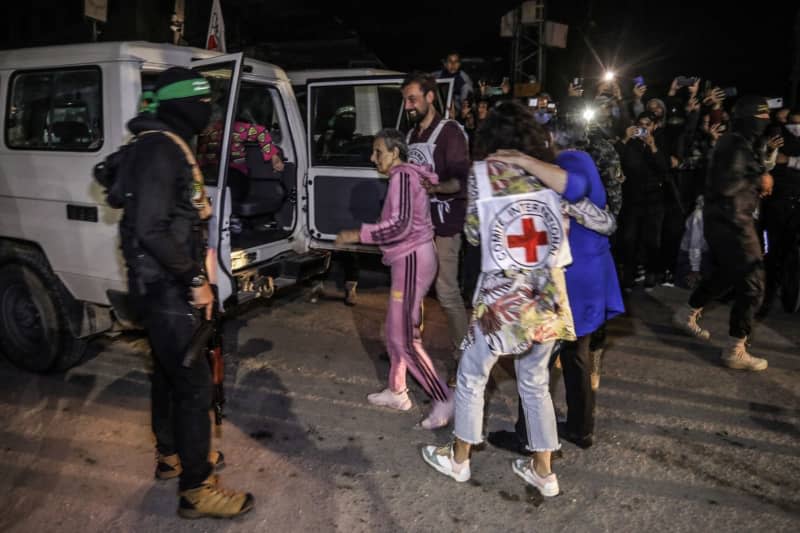Artist shutters Israel Venice pavilion until Gaza ceasefire deal made

The Israeli pavilion at the Venice Biennale art and cultural exhibition will not open as planned until a Gaza ceasefire deal has been reached, according to the exhibiting artist.
The artist and curators of the pavilion will open their exhibition when an agreement on a ceasefire in the Gaza war and the release of the hostages held by the Palestinian militant group Hamas has been reached, artist Ruth Patir announced on her website on Tuesday.
The US newspaper the New York Times reported that the decision had also been announced on a sign outside the closed pavilion.
The Venice Biennale is due to open on Saturday. On Tuesday, representatives of the press were to be given a preview of the countries' pavilions.
The Biennale takes place from April 20 to November 24 in the northern Italian city. It is regarded as one of the world's most important presentations of contemporary art.
The opening of the Israeli pavilion at this year's art biennial had been eagerly awaited. Like many other cultural events, the art biennial was overshadowed by the Gaza war in the run-up to the event.
"The decision by the artist and the curators is not to cancel themselves nor the exhibition; rather, they choose to take a stance in solidarity with the families of the hostages and the large community in Israel who is calling for change," the statement on Patir's website said.
"I hate it ... but I think it's important," the New York Times quoted Patir as saying.
Patir rejects a cultural boycott. " I prefer to raise my voice with those I stand with in their scream, ceasefire now, bring the people back from captivity. We can't take it anymore," she wrote in an Instagram story.
Curator Tamar Margalit told the New York Times that visitors could see one of Patir's video works through the windows of the closed pavilion.
Patir wrote in her Instagram story, which was posted shortly after it was announced that the pavilion would not be opening, that she felt it was not the time for art and that she had to believe that she would return.
"If I am given such a remarkable stage, I want to make it count. I have therefore decided that the pavilion will only open when the when the release of hostages and ceasefire agreement happens," she wrote.
Thousands of people, including many artists, had called for Israel to be excluded from this year's Biennale in a petition at the end of February.
It is unacceptable to present art from a state that is currently carrying out atrocities against the Palestinians in Gaza, according to an open letter published online by the Art Not Genocide Alliance (ANGA). They accuse Israel of genocide. According to the activist group, more than 23,000 people have now signed the letter.
More than 1,200 people were killed in the massacre carried out by Hamas and other militant Palestinian groups in Israel on October 7. Numerous people were also taken hostage from Israel to the Gaza Strip. There are still 133 people being held there, only some of whom are probably still alive.
Israel responded to the attack with massive airstrikes and a ground offensive in the Gaza Strip.
In view of the high number of civilian casualties and the catastrophic humanitarian situation in the strip, Israel is being increasingly criticized internationally - even by close partners.

